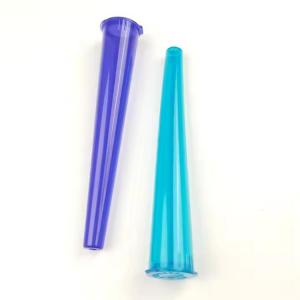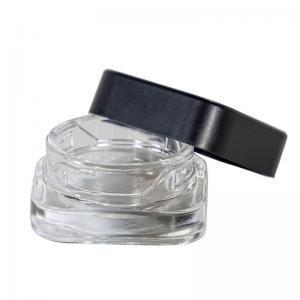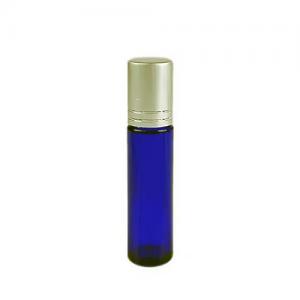Ukraine war, supply-chain woes cause cannabis fertilizer shortage, increased costs
 2022-05-27
2022-05-27
Ukraine war, supply-chain woes cause cannabis fertilizer shortage, increased costs
Russia’s invasion of Ukraine as well as ongoing supply-chain issues are causing a global fertilizer shortfall, leading cannabis growers to brace for higher prices.
“With disruptions taking place, this will inevitably lead to inflation on not only fertilizers but harvested food crops and potentially cannabis,” said Huston Hoelscher, manager of the environmental sciences group and senior pest control advisor at Urban-Gro, a marijuana cultivation facility design and engineering firm based in Lafayette, Colorado.
Ukraine and Russia combined provide nearly 28% of nitrogen, phosphorus and potassium to the global market, according to Hoelscher.
“Without the access to fertilizers, this can lead to lower yields – which, in turn, will create lower-quality product as well as limited surplus,” he said.
And that could push up what have been low wholesale cannabis prices, Hoelscher added, resulting in higher prices for retail and dispensary operators and consumers.
This is leading experts to suggest growers adjust their purchasing practices, including stocking up on supplies as well as adopting cultivation methods that use less fertilizer.
Alen Nguyen, CEO and founder of Mainstem, a Seattle-based B2B integrated supply procurement platform for cannabis companies, said the situation “is absolutely disastrous for the cannabis supply chain.”
“Sky-high fertilizer prices will have farmers worldwide scaling back its use and reducing the amount of land they’re cultivating,” he added.
Russia is the largest global exporter of fertilizer and soil nutrients, and U.S. sanctions on trade with the country because of its Ukraine invasion are further disrupting the global supply chain.
According to Reuters, U.S. farmers’ fertilizer bills are expected to go up by 12% this year after a 17% increase in 2021.
The quarterly magazine Modern Farmer reported that prices for three key fertilizers have skyrocketed over the past year:
Anhydrous ammonia: up 235%.
Liquid nitrogen: up 192%.
Urea: up 149%.
Earlier this month, the Biden administration announced it is doubling an “initial $250 million investment in domestic fertilizer production to $500 million to lower costs and boost availability for farmers, so they can obtain the inputs they need at prices they can afford to maximize yields.”
But Nguyen expects much, if not all, of that money will go to commercial agriculture crops such as soy and corn.
“Guess who gets the short end of the stick?” he said. “The cannabis industry.”
Time to plan ahead
The cannabis industry has been struggling with supply-chain problems since the COVID-19 pandemic upended shipping and logistics in 2020.
Couple that with the Russia-Ukraine conflict, and Nguyen said his software shows that some U.S. cannabis growers are unable to buy all the nutrients they need because of the current supply shortfall.
Others are stockpiling an entire year’s worth of growing supplements.
The spike in costs for fertilizer will likely be passed on to the consumer in the form of higher prices for a variety of cannabis products, Nguyen said.
This is also true for the solvents used to make cannabis concentrates, he added.
Nguyen expects to see a shift in buying behavior among cannabis companies that are forced to stop purchasing in small quantities with “just-in-time buys” to a more strategic forecasting and planning mindset.
“I think we’re going to see the cannabis industry fully digitize its supply chain and adopt proactive procurement practices,” he said.
“The greatest lessons from the last two years is that uncertainty and disruption must be anticipated.”
Less is more
David Kessler, chief science officer of Billerica, Massachusetts-based Agrify Corp., which makes hardware and software for indoor cannabis cultivators, said a lot of marijuana growers will learn they’re using more fertilizer than they need.
Oftentimes, fertilizer manufacturers will recommend that farmers use the maximum amount of their product, but that’s not always necessary, he said.
“Overall, what we’re going to see is cultivators being more judicious with their fertilizer,” Kessler added. “You can grow healthy plants with less.”
Kessler suggested cannabis growers looking to reduce the impact of the shortages and increased costs dial in their practices, including employing techniques such as crop steering, which involves precisely monitoring how plants are performing and adjusting controls accordingly.
He advised that growers use meters for water temperature and electrical conductivity saturation, for example. Electrical conductivity measures salt concentration and indicates electrolyte concentration of the solution.
“The conscientious and intentional utilization of water and fertilizer will allow you to weather fluctuations in supply chain and inputs much better,” he said.
Laura Clauser, procurement to pay manager at Ethos Cannabis, a vertically integrated multistate marijuana operator based in Center City, Pennsylvania, said shipping costs for raw materials have increased by at least 50% since the start of the pandemic.
Fertilizer prices began to rise in April, with a cost increase of 15%.
Clauser found success using supply-chain management software Mainstem to consolidate orders rather than spread payments across multiple vendors.
“It helped to not have to worry to get these fertilizers that are in short supply,” she said.
She also recommended growers mix their own nutrients so individual ingredients can be sourced separately.
Regenerative farming as a solution
Regenerative farmers, who try to reuse or recycle resources in as many stages of the cannabis plant’s life cycle as possible, are more insulated from the current disruption to the global marijuana supply chain.
“The fertilizer shortage may mean that cultivators begin pivoting towards more sustainable methods,” Nguyen said.
Lauren Fortier, director of cultivation for Theory Wellness, a marijuana company based in Stoneham, Massachusetts, said her approach to sustainability has helped to sidestep the fertilizer shortage.
“Myself and other organic and regenerative growers have seen this coming,” she said.
While the supply-chain disruption caused by the pandemic has made certain parts of her operation more expensive and difficult to find – security cameras, for example – using a closed-loop system for her soil inputs means the fertilizer shortage doesn’t affect her as much.
“All of the things that we use are either reused or genuinely grown on our farm or sourced locally,” Fortier said.


 English
English français
français Deutsch
Deutsch русский
русский italiano
italiano español
español português
português Nederlands
Nederlands 日本語
日本語 한국의
한국의











 2022-05-27
2022-05-27
 Online service
Online service


